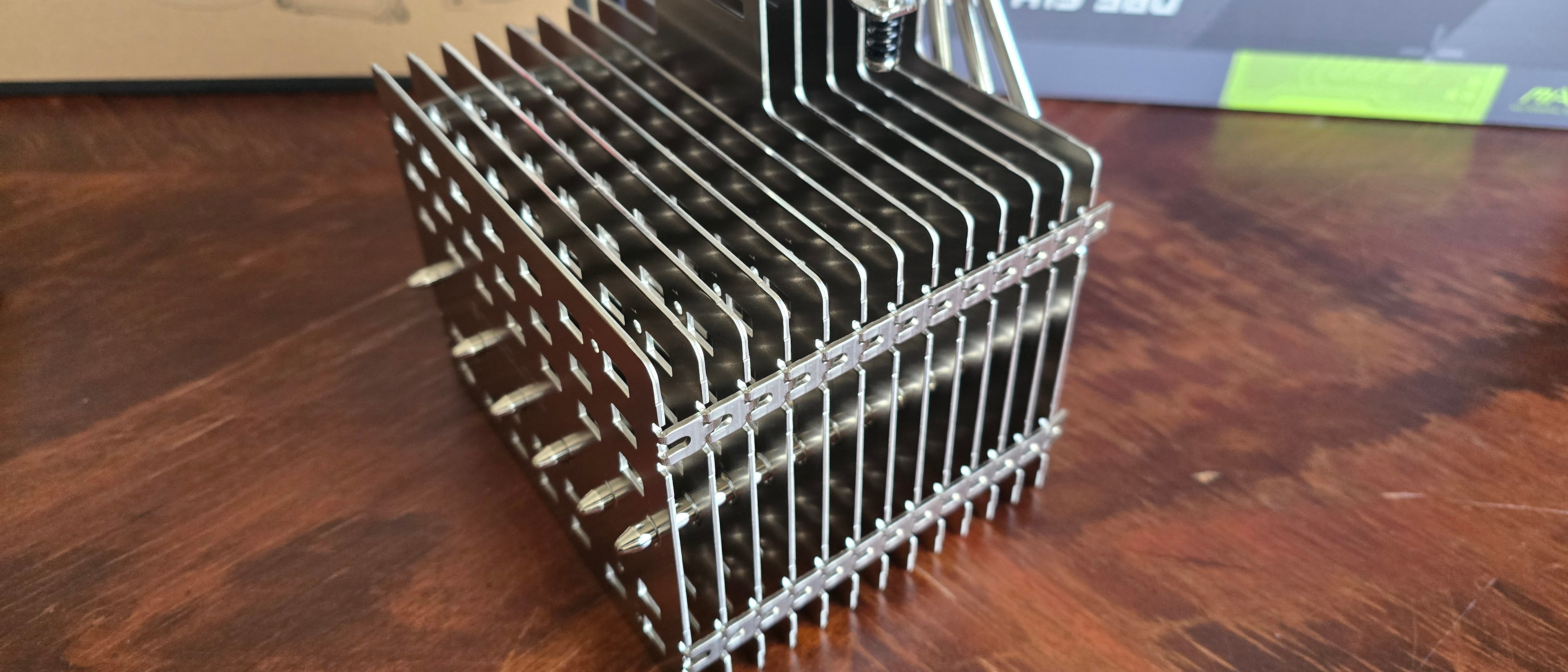Why you can trust Tom's Hardware
Because this cooler isn’t quite comparable to traditional models on the market, we’re going to look at its performance differently than previous reviews. We’ll start by looking at performance with AMD Ryzen 7700X and 9950X3D, then switch over to looking at Intel’s Core i7-14700K and i9-13900K.
AMD Ryzen 7 7700X
Over the course of ten minutes, the NH-P1 was able to sustain an average of 102W cooled. The workload run was Cinebench R23 multi-core benchmark test, the idea being to push the CPU to its thermal limits.
I feel like people should keep in mind when reading this review — these benchmark tests are worst case scenarios. Common usage scenarios — especially workloads like gaming, watching videos, office work, or web browsing — will be far less stressful — and as such, the NH-P1 will provide full performance in these less-intensive situations.
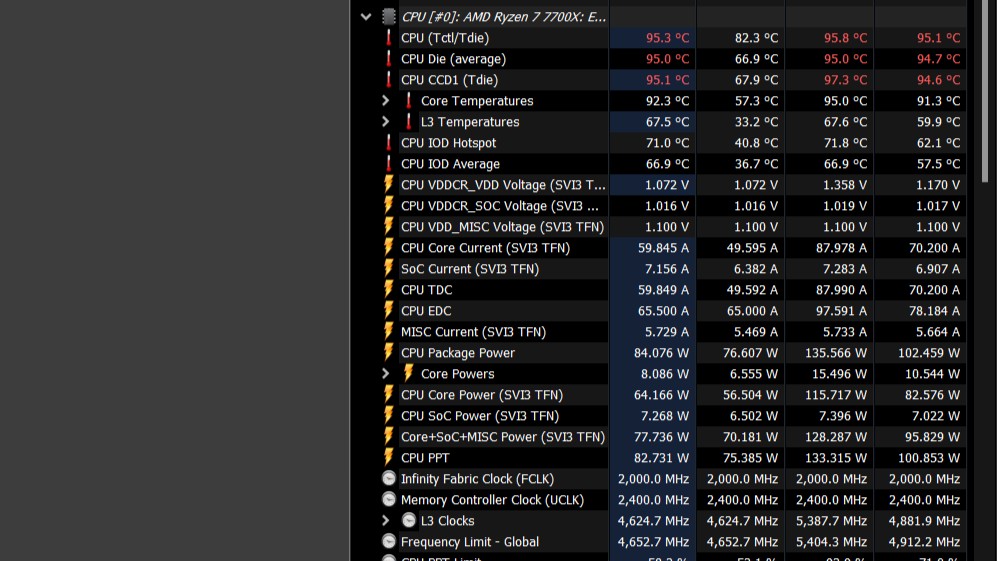
By extending our testing to thirty minutes long to satisfy the most picky of our readers, the average power cooled drops to an average of 85W – plateauing at 75W cooled at the end of testing. That number on its own might seem unimpressive, until you consider that Ryzen 7700X’s eco mode only consumes a maximum of 65W.
What this means is that unless you need the absolute fastest performance, Noctua’s NH-P1 will provide plenty of cooling power for common needs. The way I test coolers is much more intensive than normal usage. Other authors here at Tom’s Hardware have previously examined AMD’s Ryzen 3900 to show how much (or little) is lost with ECO mode on Ryzen systems - and we’ll cover benchmark performance in the next section covering AMD’s Ryzen 9 9950X3D.
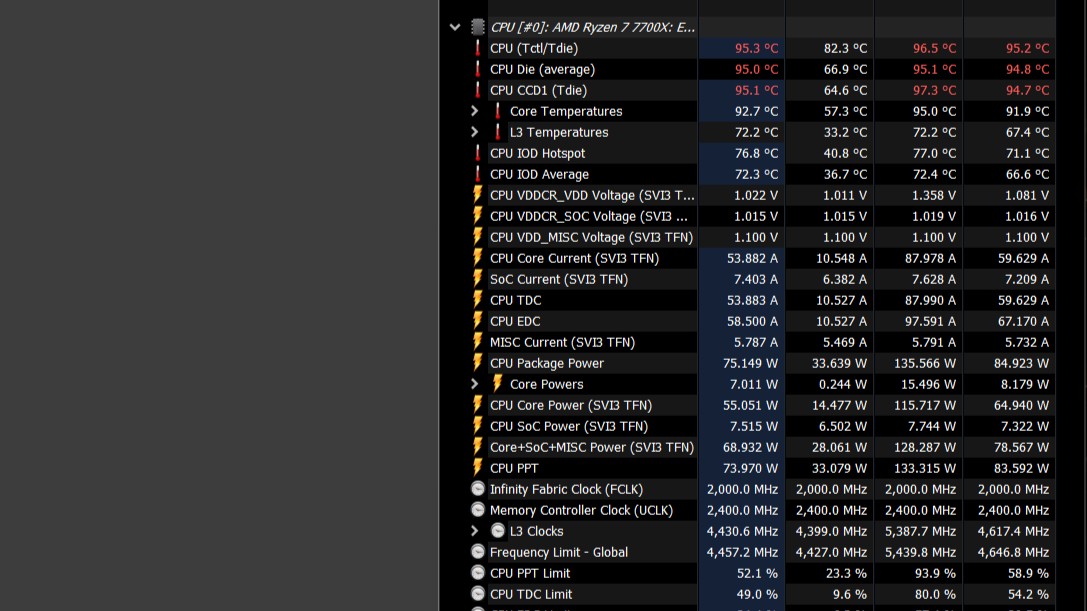
AMD Ryzen 9 9950X3D
We’re going to look at performance with AMD’s flagship Ryzen 9 9950X3D in two different graphs. First we’ll look at the performance of the cooler by looking at how many watts it can handle.
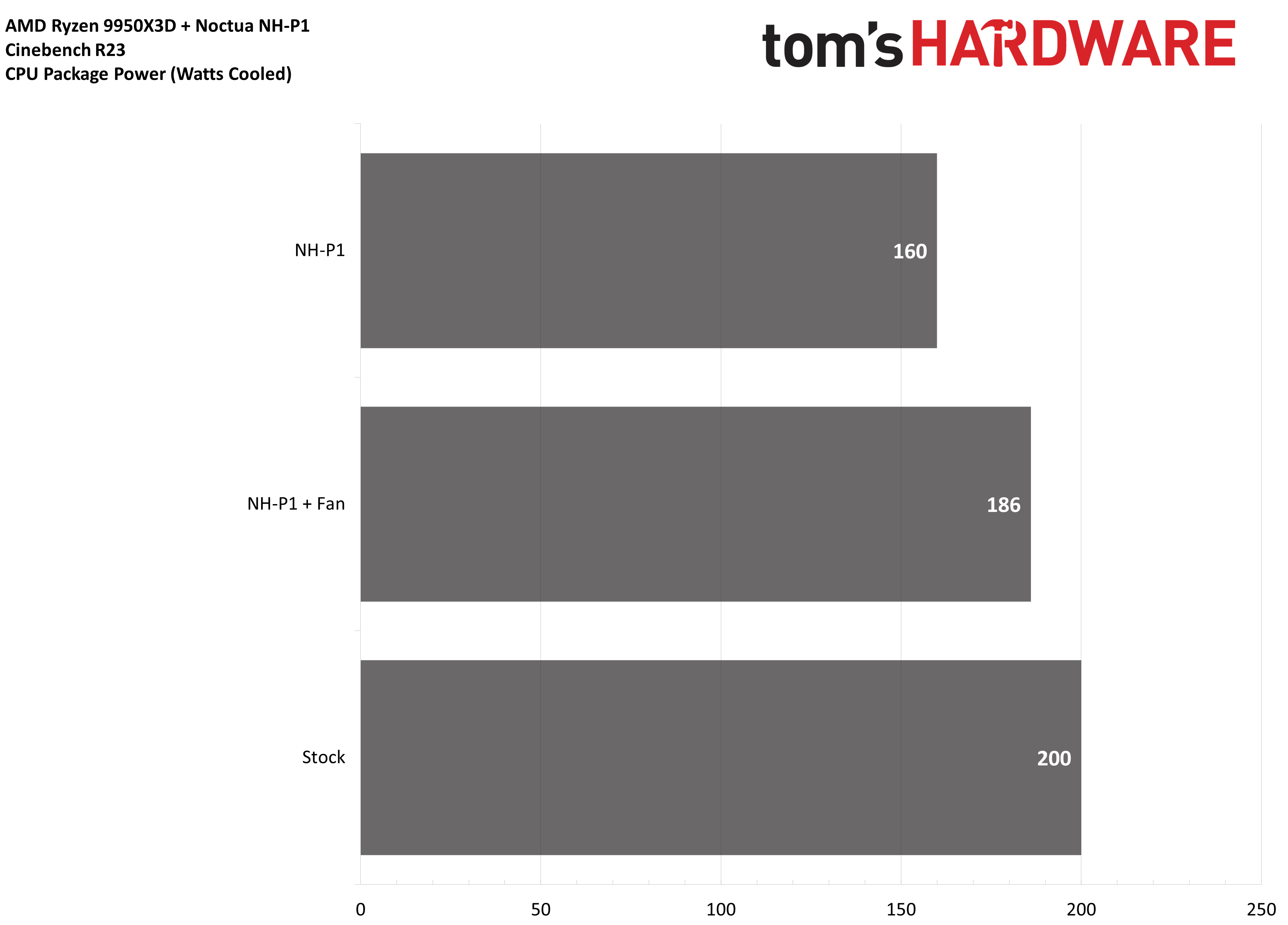
In the default configuration, Noctua’s NH-P1 is able to handle about 80% of the maximum stock heat output of AMD’s Ryzen 9 9950X3D in intense workloads. Installing a fan on the NH-P1 increases that figure to 93%. This is pretty impressive, especially when these benchmark tests are worst case scenarios.
Get Tom's Hardware's best news and in-depth reviews, straight to your inbox.
But how does that loss of power consumption translate into benchmark results? Less than one would think! You might be surprised by the benchmark scores of Cinebench R23’s multi-core test.
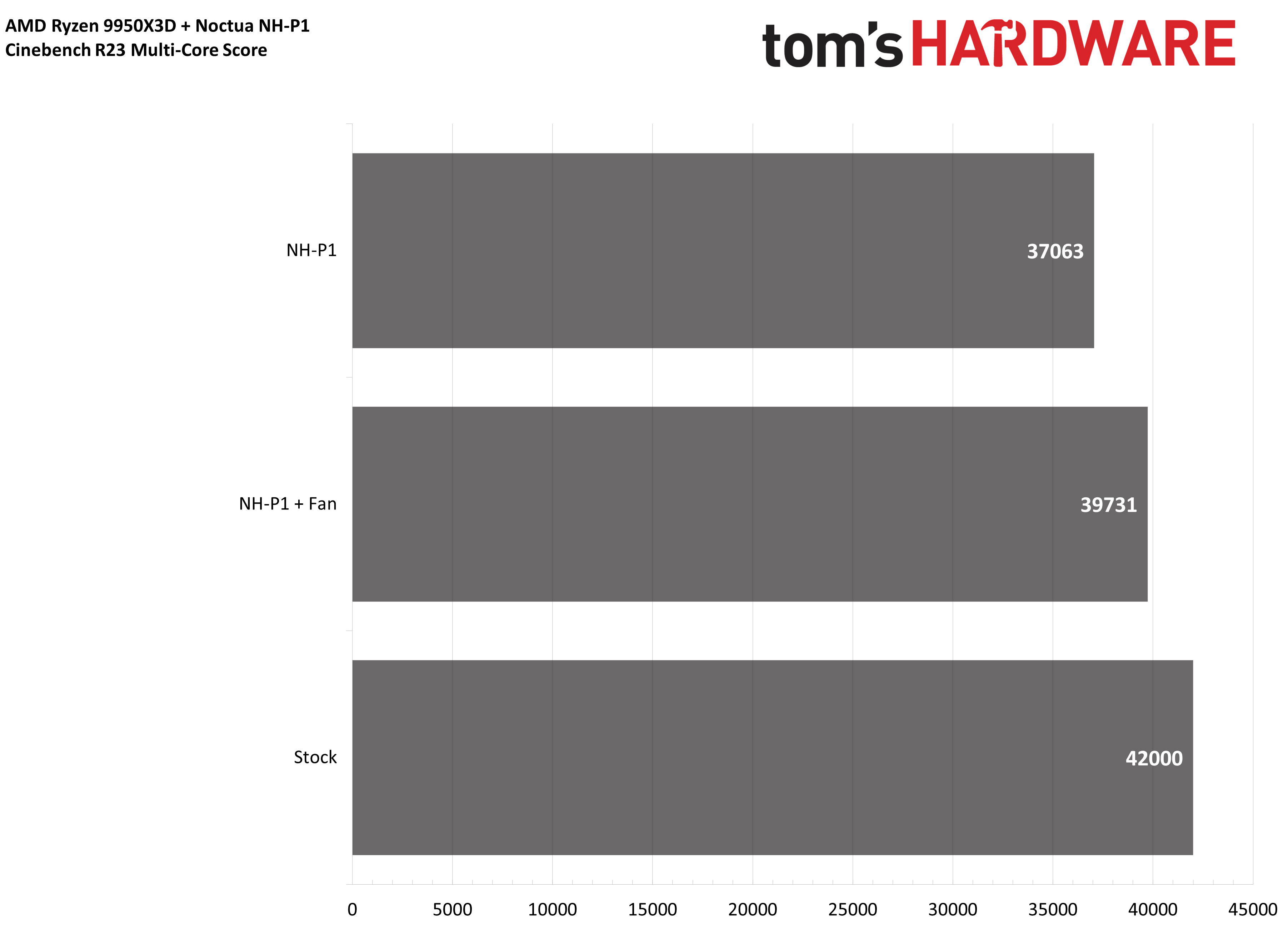
The default performance of AMD’s Ryzen 9 9950X3D will result in a 10 minute run of Cinebench R23 multi-core score of about 42,000 points. In its stock configuration of the NH-P1, that score drops to 37K due to thermal throttling. Adding a single fan to the cooler bridges that gap, bringing the score up to 40K – a mere 2,000 away from stock performance.
Intel Core i9-13900K
Intel’s i9-13900K is amongst the most difficult to cool CPUs still relevant in today’s market. Even if you set a 200W power limit, the CPU will reach TJMax with Noctua’s NH-P1 after 2.5 minutes of an intensive workload.
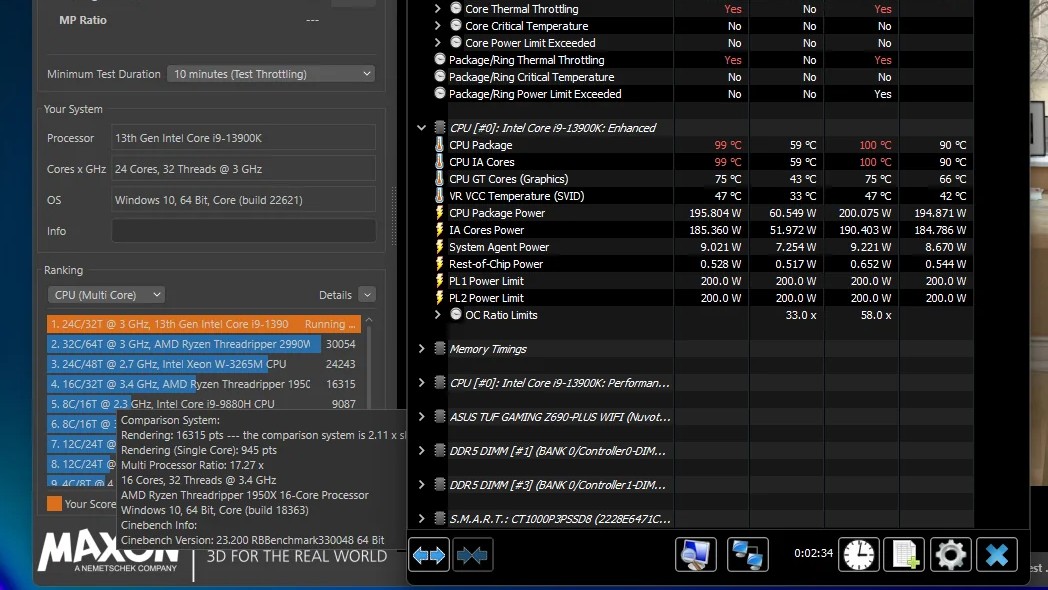
With power limits removed in BIOS settings, Noctua’s heatsink can handle about 213W with Intel’s Core i9-13900K over the course of ten minutes when a fan is added to the cooler.
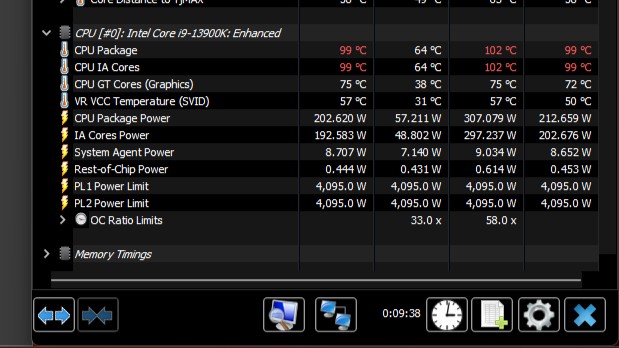
But how about long term performance, without a fan? You might be surprised, but the NH-P1 was able to handle more than the PL1 of 125W! At the end of 45 minutes, the cooler was still dissipating 150W. That’s the longest test I’ve ever done for testing a cooler, and I highly doubt testing longer would produce different results. After 45 minutes, the cooler has been fully saturated and performance will plateau.
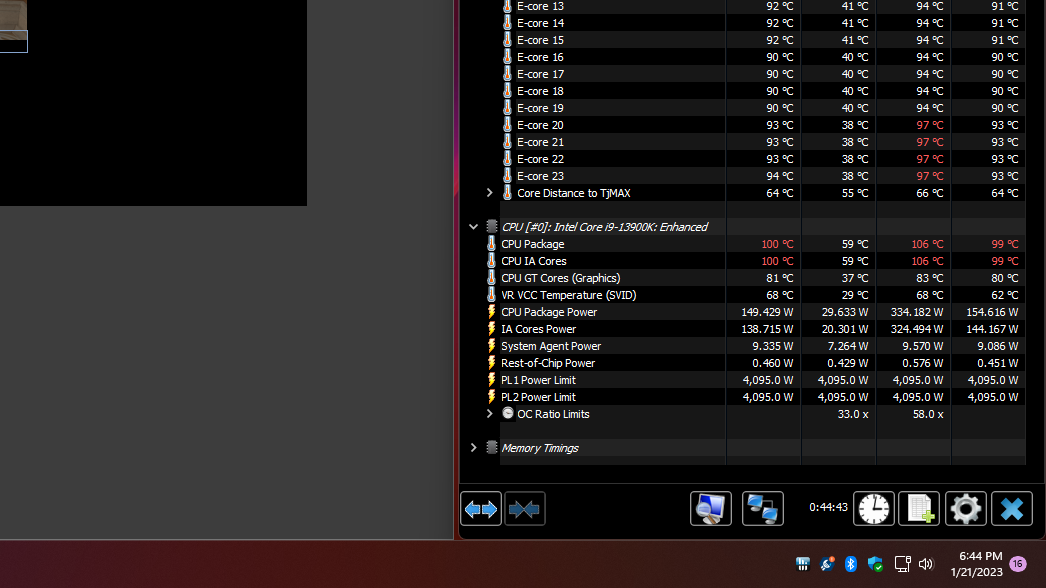
Intel Core i7-14700K
Lastly, we’ve tested Noctua’s fanless solution with Intel’s “Raptor Lake” Core i7-14700K – another CPU which is fairly difficult to cool.
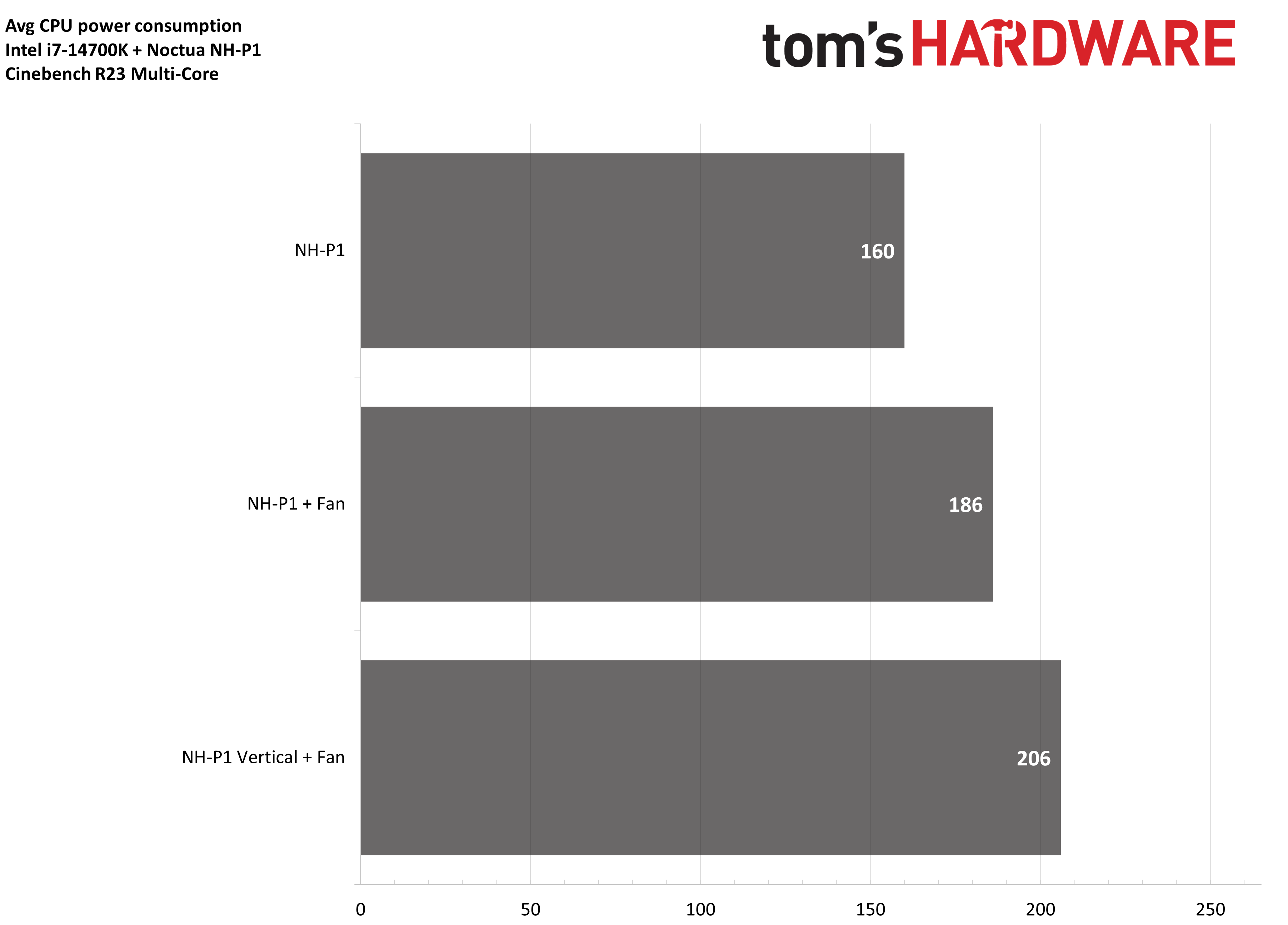
In its default configuration, horizontally mounted, the CPU’s power consumption dropped to an average of 160W in a basic ten-minute test. Changing the orientation of the cooler’s installation improved performance significantly, increasing to 184W.
Finally, adding a fan increased total cooling capacity to 206W – plenty powerful enough for most users, especially in common scenarios.
Conclusion
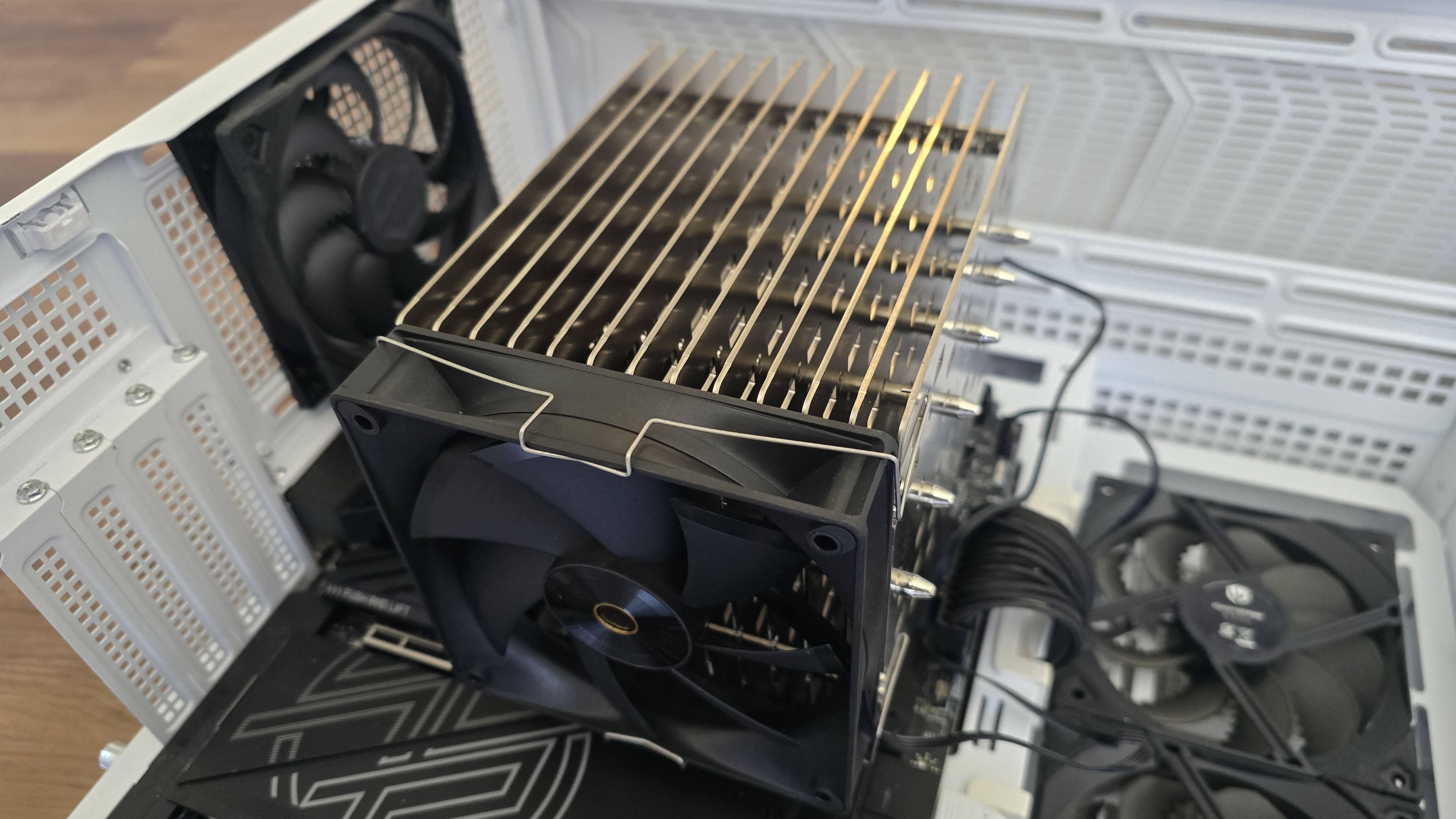
Noctua’s NH-P1 is a unique fanless cooler that offers completely silent performance, at the cost of slightly reduced cooling power. You won’t look at this if you need every last bit of performance for overclocking, but rather if you’re a user who prefers quiet and has more common workloads.
Even if you do run intense multi-core workloads, there won’t be much of a performance loss – as shown with our Cinebench R23 tests using AMD’s Ryzen 9 9950X3D.
At this time, not only is Noctua’s NH-P1 the strongest fanless solution available for common users – it is also the only one that is easily available for purchase. The $119 USD price tag might be difficult to swallow, but that’s the price of a niche product with strong performance.

Albert Thomas is a contributor for Tom’s Hardware, primarily covering CPU cooling reviews.
